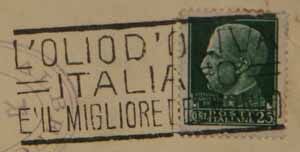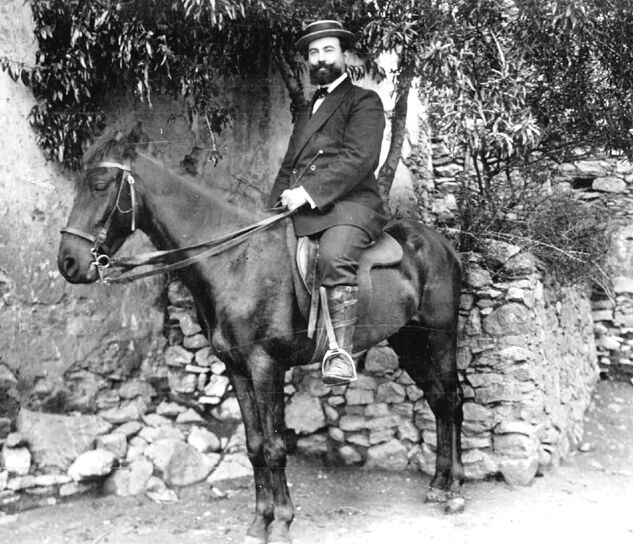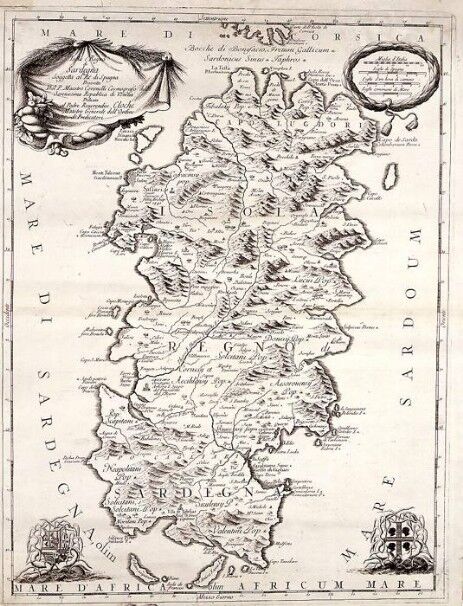
Il museo è denominato "Sa mola de su Notariu", che nella lingua locale della nostra isola significa il frantoio del notaio. Era di proprietà del notaio Francesco Locci (1880-1966), soprannominato "Su Notariu", e dal quale prendeva il nome. In questi locali si è svolta l'attività di molitura per 400 anni, e nel 2003, quando il museo dell'olio è stato inaugurato dal nipote omonimo, si è voluto mantenere l'antica denominazione con cui il frantoio era conosciuto nella zona. La collezione del museo comprende non solo macchinari e utensili antichi utilizzati nella produzione dell'olio d'oliva, ma ospita anche numerosi documenti storici che illustrano l'evoluzione dell'industria olearia nel corso degli anni. Questi documenti offrono uno sguardo unico sul passato, mettendo in luce l'importanza dell'olio d'oliva nella cultura e nell'economia della Sardegna

Tra i documenti esposti si distinguono una rarissima bolla di carico del 1845 relativa al trasporto via mare di barili di olio da Viareggio a Livorno e un annullo postale del 1930 che recita: "L'olio d'oliva italiano è il migliore del mondo". Tali documenti testimoniano l'orgoglio e la passione per l'olio d'oliva italiano e la sua reputazione di eccellenza nel corso della storia.
The museum is named "Sa mola de su Notariu," which in the local language of our island means the notary's oil mill. It was owned by notary Francesco Locci (1880-1966), nicknamed "Su Notariu," from which it took its name. The milling activity took place in these premises for 400 years, and in 2003, when the oil museum was inaugurated by his namesake grandson, the ancient name by which the mill was known in the area was preserved. The museum's collection includes not only ancient machinery and tools used in olive oil production but also numerous historical documents that illustrate the evolution of the oil industry over the years.

These documents provide a unique insight into the past, highlighting the importance of olive oil in Sardinia's culture and economy.
Among the exhibited documents, there are a rare 1845 bill of lading related to the sea transport of barrels of oil from Viareggio to Livorno and a 1930 postal cancellation that reads: "Italian olive oil is the best in the world." These documents testify to the pride and passion for Italian olive oil and its reputation for excellence throughout history.
Le musée est appelé "Sa mola de su Notariu", ce qui dans la langue locale de notre île signifie le moulin à huile du notaire. Il était la propriété du notaire Francesco Locci (1880-1966), surnommé "Su Notariu", d'où il tirait son nom. L'activité de mouture a eu lieu dans ces locaux pendant 400 ans, et en 2003, lorsque le musée de l'huile a été inauguré par son petit-fils homonyme, l'ancienne dénomination sous laquelle le moulin était connu dans la région a été conservée. La collection du musée comprend non seulement des machines et des outils anciens utilisés dans la production d'huile d'olive, mais aussi de nombreux documents historiques qui illustrent l'évolution de l'industrie pétrolière au fil des ans.

Ces documents offrent un aperçu unique du passé, mettant en lumière l'importance de l'huile d'olive dans la culture et l'économie de la Sardaigne.
Parmi les documents exposés, on trouve une rarissime lettre de voiture de 1845 concernant le transport par mer de barils d'huile de Viareggio à Livourne et une annulation postale de 1930 qui dit : "L'huile d'olive italienne est la meilleure au monde". Ces documents témoignent de la fierté et de la passion pour l'huile d'olive italienne et de sa réputation d'excellence au fil de l'histoire.
Das Museum trägt den Namen "Sa mola de su Notariu", was in der lokalen Sprache unserer Insel die Ölmühle des Notars bedeutet. Es war im Besitz des Notars Francesco Locci (1880-1966), der den Spitznamen "Su Notariu" trug und von dem es seinen Namen erhielt. In diesen Räumlichkeiten fand 400 Jahre lang die Mühlentätigkeit statt, und als 2003 das Ölmuseum von seinem gleichnamigen Enkel eröffnet wurde, wurde der alte Name, unter dem die Mühle in der Gegend bekannt war, beibehalten. Die Sammlung des Museums umfasst nicht nur alte Maschinen und Werkzeuge, die bei der Herstellung von Olivenöl verwendet wurden, sondern auch zahlreiche historische Dokumente, die die Entwicklung der Ölindustrie im Laufe der Jahre veranschaulichen.

Diese Dokumente bieten einen einzigartigen Einblick in die Vergangenheit und unterstreichen die Bedeutung von Olivenöl in der Kultur und Wirtschaft Sardiniens.
Unter den ausgestellten Dokumenten befinden sich eine äußerst seltene Ladeliste von 1845, die sich auf den Seetransport von Ölfässern von Viareggio nach Livorno bezieht, und ein Poststempel von 1930, der besagt: "Italienisches Olivenöl ist das beste der Welt". Diese Dokumente bezeugen den Stolz und die Leidenschaft für italienisches Olivenöl und seinen Ruf für Exzellenz im Laufe der Geschichte.
El museo se llama "Sa mola de su Notariu", que en la lengua local de nuestra isla significa "el molino de aceite del notario". Fue propiedad del notario Francesco Locci (1880-1966), apodado "Su Notariu", de donde deriva su nombre. La actividad de molienda tuvo lugar en estas instalaciones durante 400 años, y en 2003, cuando el museo del aceite fue inaugurado por su nieto homónimo, se conservó la antigua denominación bajo la cual el molino era conocido en la región.
La colección del museo incluye no solo máquinas y herramientas antiguas utilizadas en la producción de aceite de oliva, sino también numerosos documentos históricos que ilustran la evolución de la industria oleícola a lo largo de los años.

Estos documentos ofrecen una visión única del pasado y subrayan la importancia del aceite de oliva en la cultura y la economía de Cerdeña.
Entre los documentos expuestos se encuentra una lista de carga extremadamente rara de 1845, que hace referencia al transporte marítimo de barriles de aceite desde Viareggio hasta Livorno, y un matasellos de 1930 que proclama: "El aceite de oliva italiano es el mejor del mundo". Estos documentos atestiguan el orgullo y la pasión por el aceite de oliva italiano y su reputación de excelencia a lo largo de la historia.
Entre los documentos expuestos se encuentra una lista de carga extremadamente rara de 1845, que hace referencia al transporte marítimo de barriles de aceite desde Viareggio hasta Livorno, y un matasellos de 1930 que proclama: "El aceite de oliva italiano es el mejor del mundo". Estos documentos atestiguan el orgullo y la pasión por el aceite de oliva italiano y su reputación de excelencia a lo largo de la historia.









